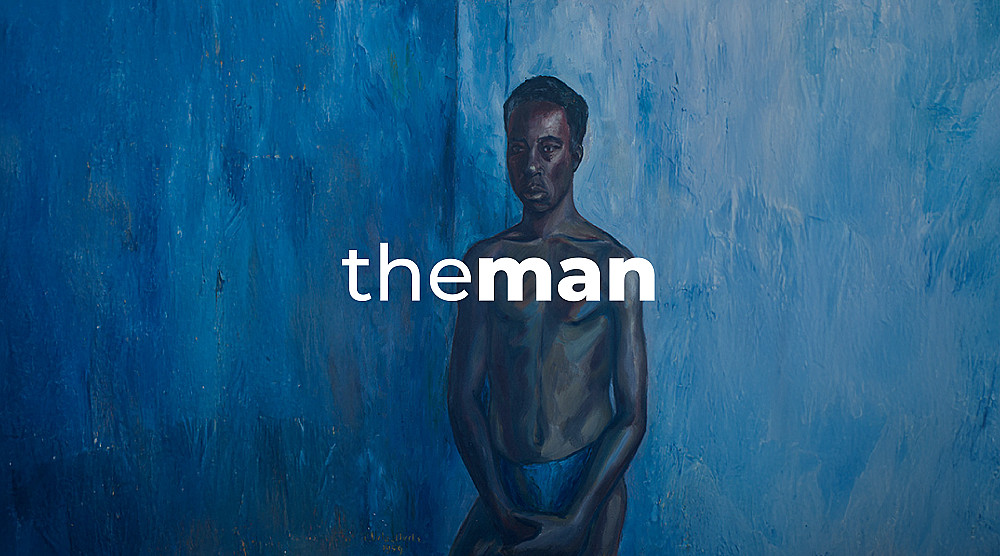Nigerian Modernism at Tate Modern: Uche Okeke at the Heart of a New Visual Language

Published 09 October 2025 in The Man
Uche Okeke Legacy Editorial
Dates: 8 October 2025 – 10 May 2026
Venue: Tate Modern, London
What the exhibition sets out to do
Tate Modern’s Nigerian Modernism exhibition traces how artists working across Nigeria - and in connected centres like London, Munich, and Paris - shaped a modern art rooted in local traditions yet conversant with global modernism. It brings together over 50 artists across painting, sculpture, textiles and poetry, highlighting networks such as the Zaria Art Society and the Mbari Artists’ & Writers’ Club, and includes figures like Uzo Egonu, El Anatsui, Ladi Kwali, and Ben Enwonwu.
Exterior of Tate Modern (January 2024) - DiscoA340 - Wikimedia Commons
Why this moment matters
The show marks the first UK survey to chart the development of modern art in Nigeria, framing modernism in Nigeria as a set of dialogues - between indigenous forms and European techniques, between home and diaspora, and between colonial histories and post-independence futures. It culminates in a focus on the Stateless People series by Uzo Egonu, underscoring how questions of identity and belonging shaped late-20th-century practice.
Uche Okeke: natural synthesis in action
Artist, teacher, and leading voice of the Zaria Art Society, Uche Okeke (1933–2016) advocated “Natural Synthesis” - a program to fuse indigenous aesthetics (especially Igbo Uli line and motif) with modern methods to articulate a postcolonial Nigerian modernism. As he wrote in 1960, Nigerian artists must grow with the new nation and draw on local traditions to define a new visual language.
Okeke’s influence radiates through several strands highlighted in the exhibition’s framework: the Zaria cohort’s curricular challenge; the Mbari circles’ cross-disciplinary experimentation; and, after the civil war, the renewed attention to Uli-inflected abstraction associated with the Nsukka milieu.
Uche Okeke, Primeval Beast, 1961, painting, 47.9 x 36, Uche Okeke Legacy
Spotlight: Primeval Beast (1961)
Why it matters
Okeke’s Primeval Beast (1961) is a key work in the exhibition’s narrative: a synthesis of Igbo folkloric imagery with a pared, abstracted formal language derived from Uli. The composition renders a fabled creature - a colossal, toad-like “brute” - with the head in profile and the massive body compressed frontally, creating a tense, emblematic form rather than literal description.
Context and iconography
The motif belongs to a cluster of “primeval” works Okeke developed at the turn of the 1960s, when he was consolidating Uli-based drawing into a modernist vocabulary. Works close in spirit include the large oil Primeval Forest (1965) - mapping how Okeke moves from linear sign to monumental emblem. (These are distinct works, but they clarify the thematic arc in which Primeval Beast sits)
Uche Okeke, Primeval Forest, 1965, woodcut, 19.7 x 20.1, Uche Okeke Legacy Collection
Exhibition history (selected trace)
A detail of Primeval Beast (Fabled Brut) featured in the 2022 survey Uche Okeke: We will now go to Kpaaza at Iwalewahaus, underscoring the work’s continued scholarly and curatorial relevance.
Dating
Foundation materials from the Uche Okeke Legacy list Primeval Beast (1961) within the artist’s “Mythology/Religion” corpus, anchoring the work in the early “Asele” phase of experimentation with Uli-derived line and mythic subject matter.
How to look
Read the creature as structure - contour, curve, and counter-curve - more than as zoological depiction. The profile/frontal split evokes masquerade logics (partial revelation), while the uli line (elastic, calligraphic) asserts continuity with women’s wall drawings transposed into modernist abstraction. Primeval Beast thus performs the argument of Natural Synthesis: a modern art “rooted” in inherited symbols yet speaking directly to the present.
A wider conversation: other artists in the galleries
While Okeke provides a central thread, Nigerian Modernism ranges widely:
• Uzo Egonu - the show reunites his Stateless People paintings for the first time in 40 years, reflecting on nationhood and diaspora.
• Ben Enwonwu, Ladi Kwali, El Anatsui - together signal the show’s breadth across media and generations, from sculptural modernism and ceramics to post-1960s transformations of material and form.
• Networks and hubs: Zaria, Ibadan (Mbari), Lagos, Enugu - linked to London, Munich, Paris - frame the exhibition’s story as one of artistic networks rather than isolated “masters”.
Visiting information
Tate Modern (Bankside, London)
8 October 2025 – 10 May 2026
For tickets and updates, see visit www.tate.org.uk/whats-on/tate-modern/nigerian-modernism
To read the press release, visit www.tate.org.uk/press/press-releases/nigerian-modernism
References
1. Tate Modern. “Nigerian Modernism,” exhibition page (dates, scope, selected artists; networks). Tate
2. Tate (Press/coverage). “Nigerian Modernism,” reunites Uzo Egonu’s Stateless People; first UK survey of Nigerian modern art. Tate
3. Art Fund exhibition listing for Nigerian Modernism (dates, networks; Zaria/Mbari context). artfund.org
4. Smarthistory, Perrin Lathrop, “Uche Okeke” (Natural Synthesis excerpts and context). Smarthistory
5. Uche Okeke Legacy - Primeval Beast work entry (iconography; uli inflection). Uche Okeke Legacy
6. Uche Okeke Legacy - Collections page (“Mythology/Religion,” listing Primeval Beast (1961)). Uche Okeke Legacy
7. High Museum of Art - Primeval Forms (1962) (comparative context). High Museum of Art
8. Bonhams - Primeval Forest (1965) catalogue entry (comparative context, dating/medium). Bonhams
9. Contemporary& (C&), exhibition note with Primeval Beast (Fabled Brut) detail (recent curatorial presence). Contemporary And
